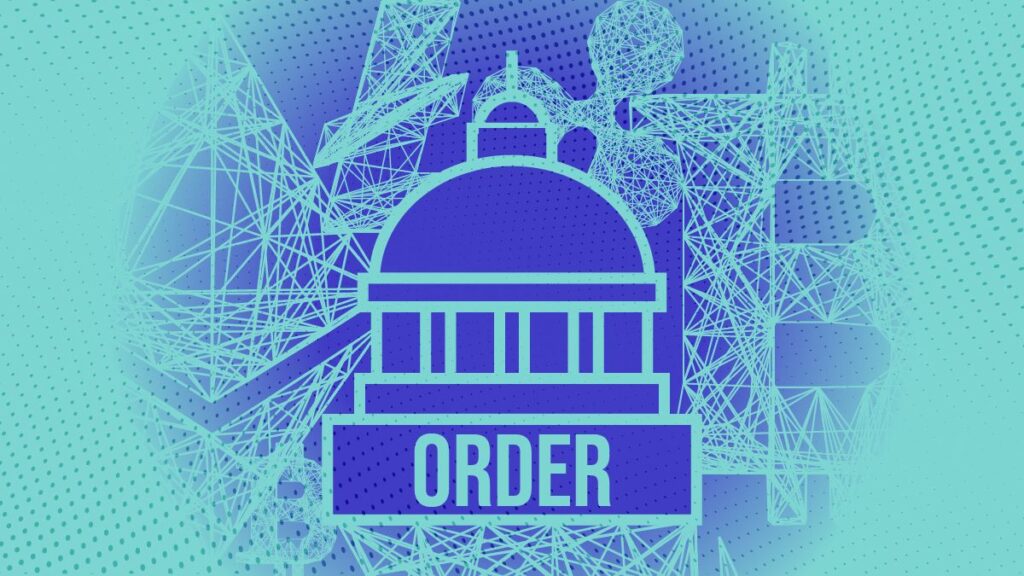
In the past year, centralized and decentralized currencies alike witnessed extensive market growth, and their popularity among the public has grown along the way. On March 9, 2022, U.S. President Joe Biden issued an executive order on cryptocurrencies, sketching an inclusive governmental approach to deal with probable risks related to the significant evolution in digital assets, emphasizing cryptocurrencies.
The crypto executive order date marked the first step into demonstrating how the Biden administration will tackle the development of digital assets and foster coherent economic evolution in the U.S. and globally, respectively, as it sets the foundation for a new wave of regulatory movement on cryptocurrencies.
The White House executive order on crypto will demand intensive coordination and actions between executive U.S. branch departments and federal and non-federal agencies throughout specific and previously-agreed-upon timeframes. The most prominent actions would have to be ensuring the utmost submission of detailed reports and U.S. crypto regulations, as well as legislative proposals.
In parallel, it will also promote numerous U.S. regulators to operate on the matter within their jurisdictions.
President Biden executive order on cryptocurrency outlines six main policy priorities:
Protecting U.S. consumers, investors, and businesses.
The order highlighted one main concern, the growing popularity and the adoption of digital currencies and companies delivering digital asset services that could potentially heighten the “risks of crimes such as fraud and theft, other statutory and regulatory violations, privacy and data breaches, unfair and abusive acts or practices, and other cyber incidents.”
In the light of these risks, the order further emphasized that threats such as these could be increased with the presence of less-educated participants on the overall effect of such as decentralized market.
Protecting the U.S. and global financial stability and mitigating economywide financial risks.
The White House executive order on cryptocurrencies expressed that issuers of such assets, in addition to exchanges, trading platforms, service providers, and many of the industry’s participants, “may not be subject to or in compliance with appropriate regulations or supervision.”
The Biden Administration fears that such participants could expose global financial stability to looming threats should they be “subject to compliance with … standards that govern traditional market infrastructure and financial firms.”
Agreeing with this point, the executive order on crypto will empower and support the role of the Financial Stability Oversight Council in analyzing the market’s financial steadiness and durability, risks, and regulatory fissures. Following the assessment, the Oversight Council will have the needed material to conduct and deliver the suitable recommendations to address the intensity of these risks.
Mitigating money laundering, other illicit finance activity, and national security risks.
The third policy objective highlights how digital assets could expose financial departments to critical threats, such as money laundering, cybercrime, ransomware, narcotics and human trafficking, and terrorism and proliferation financing. It also recognized how such assets could also be adopted as tools to avoid the U.S.’ as well as the foreign financial sanctions regimes and authorities by illicit actors.
Some of these actors include the initiators of certain ransomware and cybercrime activities, typically implemented for the sole purpose of laundering money for their illegal proceeds using digital assets service providers. This, however, is only confined within the borders of specific jurisdictions that have yet to impose the international standards developed by the Financial Action Task Force (FATC).
The Global anti-money laundering (AML) agency, the FATF, released its updated guidance for establishments that manage cryptocurrencies and virtual digital assets – such as blockchain technology, Bitcoin, crypto assets, and more – designed to appeal to the current industry’s existing regulatory framework for banks.
Reinforcing U.S. leadership in the global financial system and technological and economic competitiveness.
The White House executive order on cryptocurrencies emphasizes the U.S.’ determination in reinforcing leadership in the financial sector worldwide and technological and economic competitiveness through the reinforcement of payment innovations and digital assets. This includes underpinning global capital flows, stressing the U.S. role in global stewardship of virtual and digital assets in an effort to maintain its global competitiveness.
Promoting accessibility to safe and affordable financial services.
The U.S. revealed its determination to boost and promote responsible innovation through the order, expanding to reach equitable accessibility to financial services, specifically for citizens unanswered by the traditional banking sector. This includes “making investments and domestic and cross border funds transfers and payments cheaper, faster, and safer, and by promoting greater and more cost-efficient access to financial products and services.”
Supporting technological advances that promote responsible development and use of digital assets.
The executive order on cryptocurrency’s last objective policy covered the U.S.’s role in supporting national goals through digital assets and payments. This could be applicable in the case of security and privacy interest, which incorporates controlling the protection against illicit exploitation and directing the focus towards reducing detrimental climate impacts.